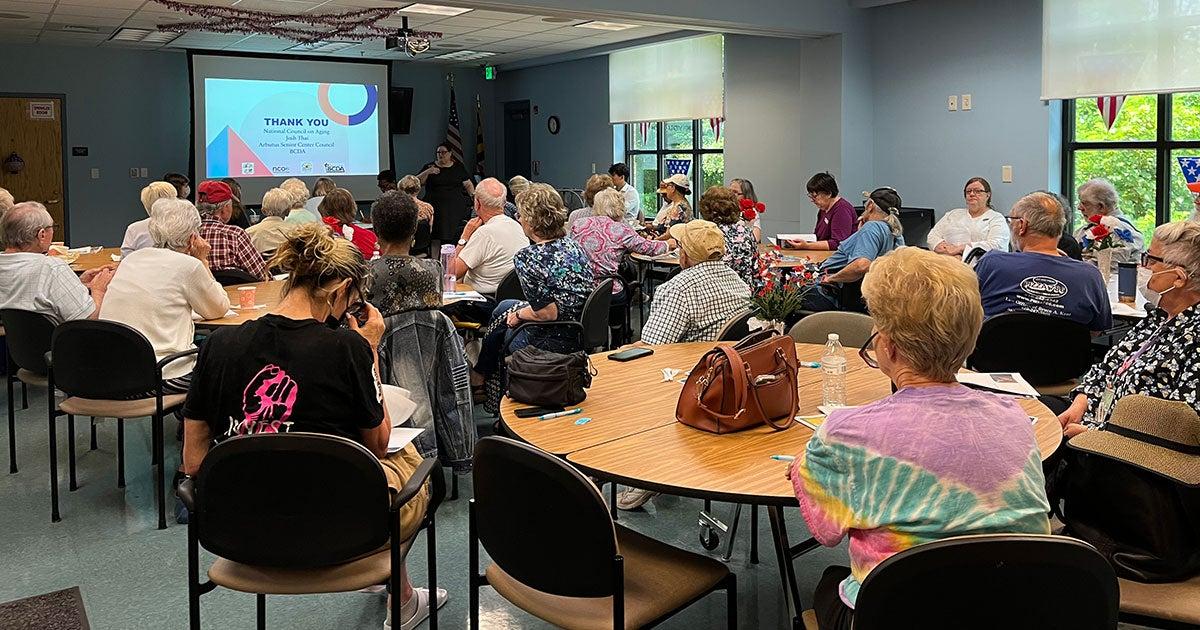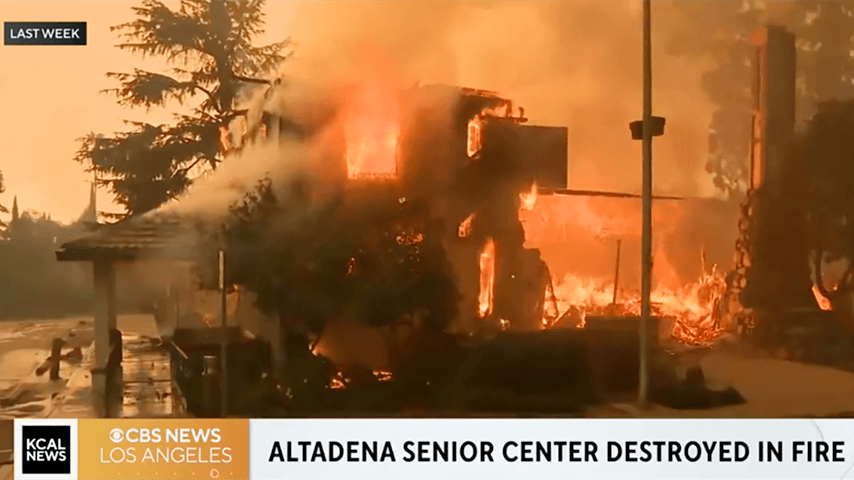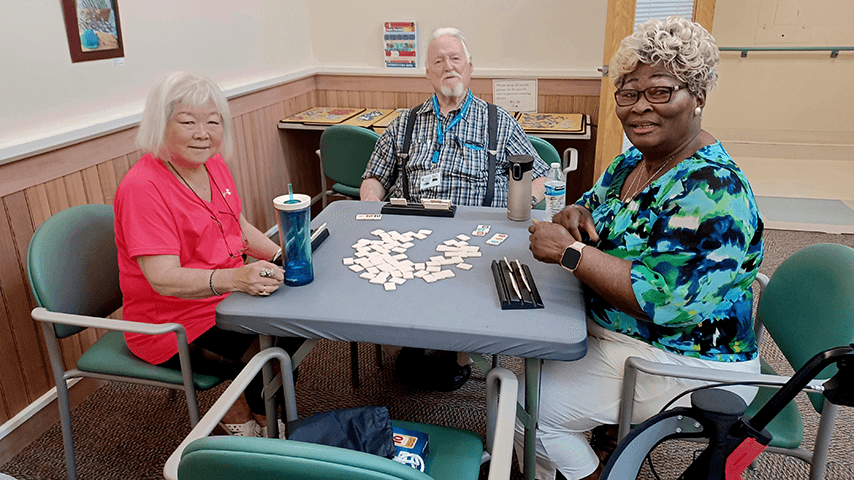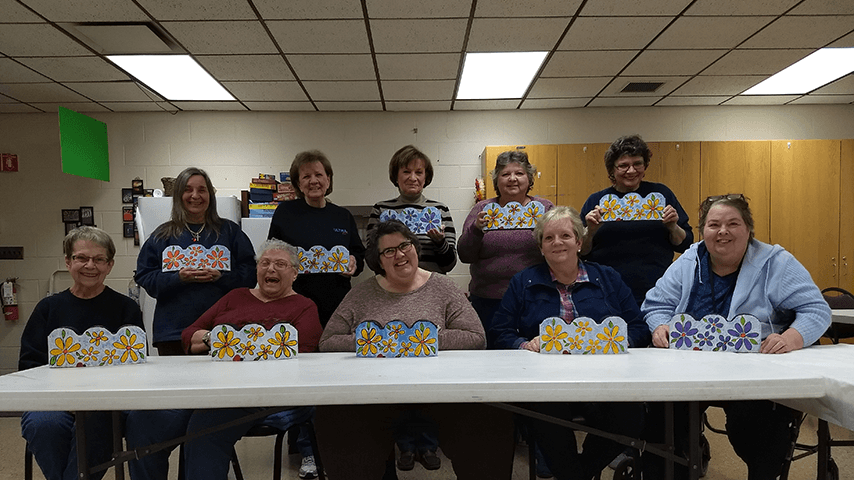Senior Center Spotlight: William Hodson Senior Center Addresses Social Isolation for Older Adults
6 min read
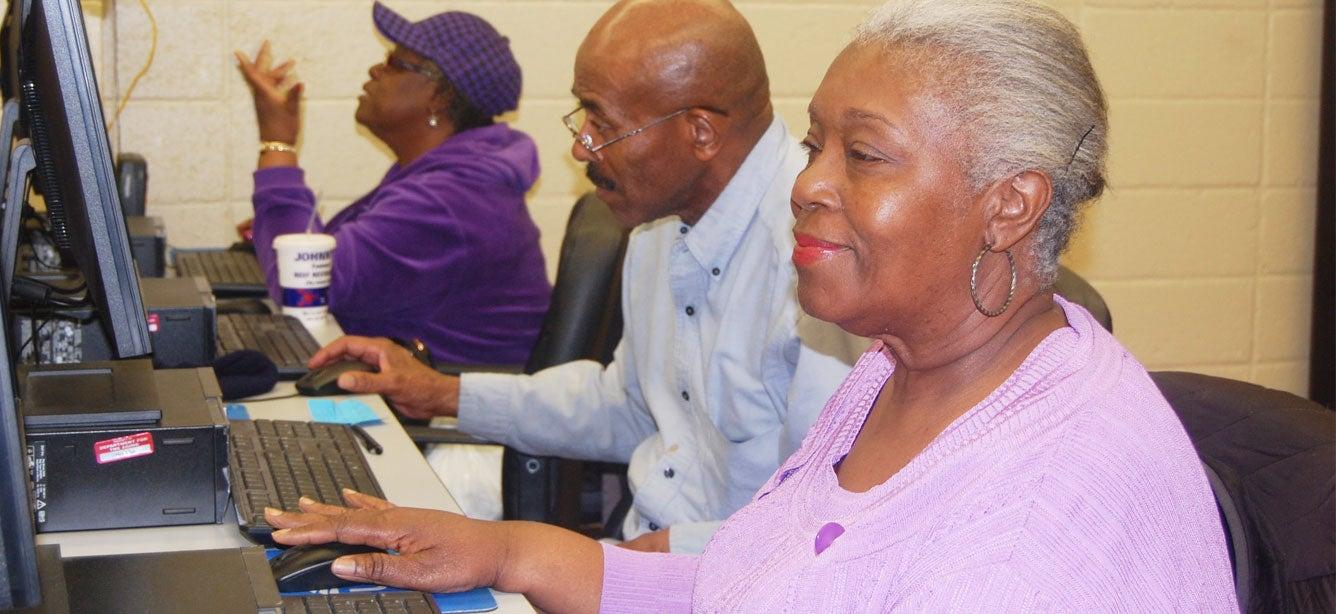
Senior centers are a time-tested model in serving older adults, and there is no greater example of this than the William Hodson Senior Center (WHSC) in the Bronx, New York. Founded in 1943, it is widely recognized as the first senior center in the nation.
WHSC has seen many changes over its almost 80 years but has been steadfast in purpose as articulated by its first director, Gertrude Landau:
To provide the avenues where older persons can become engaged in the fullest of living by establishing nurturing relationships and a general sense of belonging.”
The National Insitute of Senior Centers sat down with William Hodson Senior Center's Director Rose Mills, staff member Kaitlin Ortiz, and Veronica, a member and volunteer there for one of the Center’s many celebrations to talk about what modernizing senior center operations means and how senior centers can evolve to serve the needs of a growing older population.
Why was the William Hodson Senior Center established?
In the early 1940s a social worker with the city welfare department saw a problem. Older adults were living alone, with no support, and nothing to do. Isolation and poor nutrition were damaging. The solution, funded by Mayor Fiorello Henry La Guardia, was a space where older adults could congregate, eat together, socialize, and get help.
The William Hodson Senior Center started as a shed outside the Bronx Borough Hall Building, and it only had five members. Named in memory of the Commissioner of Welfare who was killed in a plane crash while on a United Nations assignment in North Africa, the concept for WHSC was simple and effective then. And it still is today.
Who goes to WHSC?
At the time that the William Hodson Senior Center was established, its Bronx neighborhood was mostly white and Jewish. In the mid to late 1960s, the demographics began to shift as more of the Black community moved into the neighborhood, and today the Bronx is one of the most diverse areas of the country.
Today, WHSC serves mostly Black and Hispanic participants. According to staff, WHSC is hard to get to if you don’t live nearby. The closest train is eight blocks away. However, most of their older adult participants live within a mile of the senior center. Every participant describes it as an important place in the community, where programming, activities, and staff support them.
What are some notable highlights for WHSC?
Rose Mills, PhD in Gerontology, has been the WHSC Director for 26 years. As the first senior center in the nation, she has chronicled its history.
In 1964, the William Hodson moved into its current home, where they gained ample space and an auditorium that seats up to 500 people. Many notable people have sat in that auditorium, including Robert Kennedy and Jackie Kennedy. In 1990, it became one of the 250 senior centers and affiliated sites that were funded by the New York City Department for for Aging. In 1997, WHSC launched its first computer classes for older adults, a service that they still offer.
What do older adults do at WHSC?
Before the pandemic, up to 100 people a day were coming to WHSC. When asked what programs were popular, the immediate answer was the choirs. Many participants bring their passion for singing in their church choirs to the William Hodson. They have also experienced a growth in exercise classes, and WHSC offers a range of classes, including evidence-based health promotion programs.
WHSC also has a popular sewing program, and each year they display their works for two weeks, inviting other senior centers to the show. Food is important at the William Hodson with many people coming to share a meal daily. The food is cooked on site and, according to Veronica, is very good and caters to the neighborhood.
How has the COVID-19 pandemic impacted WHSC?
Like most senior centers, when they closed for in-person activities at the beginning of the pandemic, some virtual programs were offered and the WHSC made a lot of phone calls. However, the transition to technology was rough for a lot of their participants. The city offered a program through the Department for the Aging, where tablets were provided with two years of internet service which helped tremendously.
One of the successful programs was “Movement Speaks,” which was attended religiously. WHSC also participated in a testing and vaccination effort, where they worked with Bronx Care to coordinate appointments for people to get vaccinated and held the clinics on site.
When the city allowed them to resume in-person activity, people were excited to come back even if it was just to drop in and talk to people. Their older adult participants missed the camaraderie and just being with other people.
What does “modernizing” mean to the William Hodson Senior Center?
The William Hodson has been modernizing for nearly 80 years. To them it means listening to older adults and providing them with opportunities and experiences that they haven’t had before. Technology is paramount to modernizing, and to WHSC its imperative that their programming and services take on a virtual capacity so they can continue to engage older adults who have different needs and expectations.
What’s next for the William Hodson Senior Center?
Mills is constantly looking for ways to serve the needs of a growing older population in the Bronx. She is currently exploring American Sign Language classes, providing benefits of expanded communication, and cognitive exercise. More immediately, they are looking forward to their next party—celebrating Black History Month. The William Hodson is also looking forward to next year, where they will celebrate their 80th Anniversary, and the National Institute of Senior Centers hopes to join the party!
Still not a member of the National Institute for Senior Centers? Join today, membership is free.
Free to join, the National Institute of Senior Centers (NISC) supports senior centers with best practices and innovations in programming, as well as networking and training opportunities. Ask for help, leverage NISC resources, or share your successes like the William Hodson Senior Center. Learn how you can become a NISC Affiliate.

